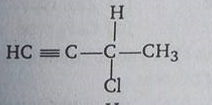In a nerve , is sodium pump is blocked , which of the following is most likely to happen ?
Na+ Outside the cell will increase
K+ inside the nerve will increase
Na+ Inside the nerve will increase
Na+andK+ will increase outside the cell
The correct Answer is:C
To solve the question regarding the effects of blocking the sodium pump in a nerve cell, we can follow these steps:
1. Understanding the Sodium-Potassium Pump:
- The sodium-potassium pump (Na+/K+ ATPase) is an active transport mechanism that moves sodium ions (Na+) out of the cell and potassium ions (K+) into the cell. For every 3 Na+ ions pumped out, 2 K+ ions are pumped in, which helps maintain the resting membrane potential of the neuron.
Hint: Recall the function of the sodium-potassium pump and its role in maintaining ion gradients across the cell membrane.
2. Effect of Blocking the Pump:
- If the sodium pump is blocked, it cannot perform its function of transporting Na+ out of the cell. Consequently, Na+ ions will accumulate inside the cell because they cannot be removed.
Hint: Consider what happens to ion concentrations when a transport mechanism is inhibited.
3. Concentration Changes:
- With the sodium pump blocked, the concentration of sodium ions inside the cell will increase. Conversely, the concentration of potassium ions inside the cell may also be affected, but primarily, sodium ions will not be removed from the cell.
Hint: Think about the implications of increased ion concentration within the cell.
4. Conclusion:
- The most likely outcome of blocking the sodium pump is that the concentration of sodium ions inside the nerve cell will increase. This can lead to depolarization of the cell membrane, affecting the nerve's ability to generate action potentials.
Hint: Reflect on how changes in ion concentration can influence nerve cell activity and excitability.
Final Answer:
If the sodium pump is blocked, the most likely effect is that the concentration of sodium ions inside the nerve cell will increase.
- The sodium-potassium pump (Na+/K+ ATPase) is an active transport mechanism that moves sodium ions (Na+) out of the cell and potassium ions (K+) into the cell. For every 3 Na+ ions pumped out, 2 K+ ions are pumped in, which helps maintain the resting membrane potential of the neuron.
- If the sodium pump is blocked, it cannot perform its function of transporting Na+ out of the cell. Consequently, Na+ ions will accumulate inside the cell because they cannot be removed.
- With the sodium pump blocked, the concentration of sodium ions inside the cell will increase. Conversely, the concentration of potassium ions inside the cell may also be affected, but primarily, sodium ions will not be removed from the cell.
- The most likely outcome of blocking the sodium pump is that the concentration of sodium ions inside the nerve cell will increase. This can lead to depolarization of the cell membrane, affecting the nerve's ability to generate action potentials.
If the sodium pump is blocked, the most likely effect is that the concentration of sodium ions inside the nerve cell will increase.
Topper's Solved these Questions
Similar Questions
Knowledge Check
Which of the following is most likely to show optical isomerism ?
A B
B C
C D
D
Which of the following is most likely to show optical isomerism ?
A B
B C
C D
D
Which of the following is most likely to show optical isomerism?
AHC≡C−H∣C∣Cl−C≡CHBHC≡C−H∣C∣Cl−CH3CHC≡C−H∣C∣Cl−HDHC≡C−Cl∣C=CH2
Which one of the following is most likely to form an ionic bond?
View SolutionWhich of the following is a motor nerve?
View SolutionWhich of the following is most likely to have a much higher breathing rate?
View SolutionA solids floats submerged in a liquid. When the liquid is heated, which of the following is most likely to happen?
View SolutionWhich of the following isotopes is likely to be most stable?
View Solution
